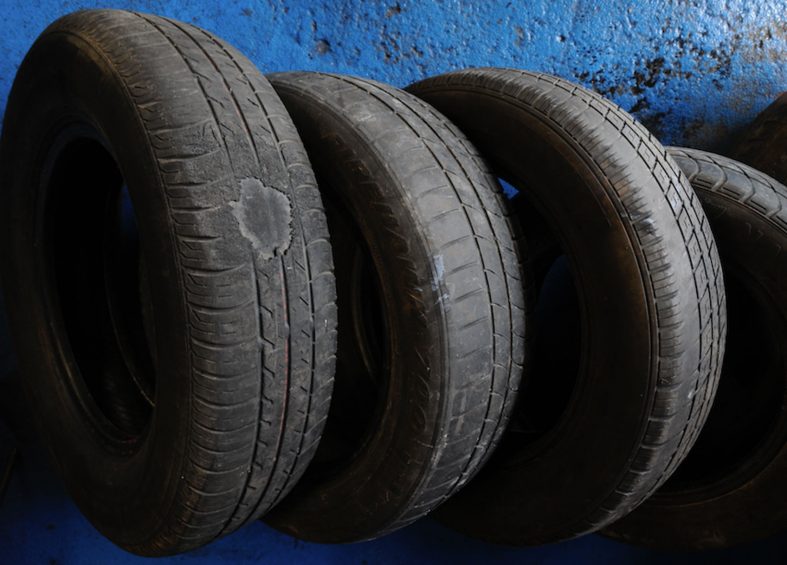A UK-wide survey has revealed that over 10 million vehicles could have been driven with an illegal tyre in 2016, fuelling the argument that despite work by safety campaigners, motorists still aren’t putting enough importance on the condition of their rubber.
The survey, conducted by TyreSafe in partnership with Highways England, revealed that an astonishing 27% of tyres were already illegal when they were replaced. Put simply, that equates to a worrying one-in-four of the 37 million cars on the UK’s roads is being driven with potentially dangerous tyres.
The findings confirm fears among road safety campaigners of a lackadaisical attitude towards tyre safety among UK motorists, which is increasing the risk of drivers being involved in an accident as well as making them liable to a £2,500 fine and three penalty points being put on their licence.

TyreSafe confirm that tyre tread depth is still one of the key aspects being ignored by motorists: “Tread depth has a decisive impact on the amount of distance a vehicle takes to stop in the wet, and must be of at least the minimum legal limit (1.6mm). Previous studies have proven that the braking distance of a vehicle with tread of 1.6mm is nearly 12m further than a vehicle with new tyres when braking in the wet from 50mph.”
But the worry comes not just from the number of illegal tyres at the point of replacement, but also the proportion that were below 2mm. While a tyre with this depth of tread is still legal, it’s difficult to predict how much longer it will stay within the law and unless the driver makes regular checks, it could easily wear beyond the legal limit. “What TyreSafe is urging motorists to do is carry out tyre safety checks on a monthly basis which will substantially reduce their risk of becoming involved in a tyre-related incident on the roads,” said Stuart Jackson, TyreSafe chairman. “Vehicles have become progressively more reliable over the years so fewer of us need to carry out the weekly maintenance we once did on components like oil and water, but tyres are still in direct contact with the road and all the potential physical objects on them. Even new tyres lose pressure over time and can become damaged by potholes or kerbing.” TyreSafe’s recommendation is to replace tyres when they are showing 2mm in summer and 3mm in winter.
A report by the AA further confirms the worrying increase in motorists running on bald tyres. Their analysis based on roadside call outs found that more than a third of cars had tread on the legal limit or below it.

But it’s not just tread depth, there’s still a worry about the continuing (although admittedly less popular) trend of fitting stretched tyres which has prompted new legislation from the Driving Vehicle Standards Agency (DVSA). The new rules give added power to MoT testers to fail cars if they are fitted in such a way that the valve stem is damaged or if the tyre doesn’t seat on the wheel rim because of how they are stretched. But there’s still room for interpretation here as only a handful of manufacturers, Nankang being one, who actually specify how far a sidewall can be stretched.
We won’t even get onto the issue of old tyres. Or perhaps we should, because running a classic Dub on aged rubber can also be dangerous. As rubber gets old its ability to grip diminishes, which is why it is recommended to replace tyres when they reach five years old. There’s also the issue of perishing – if the sidewalls start cracking with age, that can also spell trouble.

The upshot is, we all need to pay more attention to our tyres. Regular inspections are essential – as is actually replacing a tyre when it gets close to the legal limit, if you spot any bulges in the wall or other imperfections, rather than just ignoring it.
Whilst the cost of replacing a tyre is on average £60-£80 per corner, this pales into insignificance against the cost of accident damage from a blow out at speed or a fine and points combo if you get caught. It’s not only yourself who is at risk if a black circle goes bang, your car could become out of control, sending you into other motorists or pedestrians, leading to untold damage and injury. Bite the bullet, spend the money, and keep yourself safe is what we say.
Ian
The opinions expressed here are the personal opinions of the author and do not necessarily represent the views and opinions of VW Heritage.

